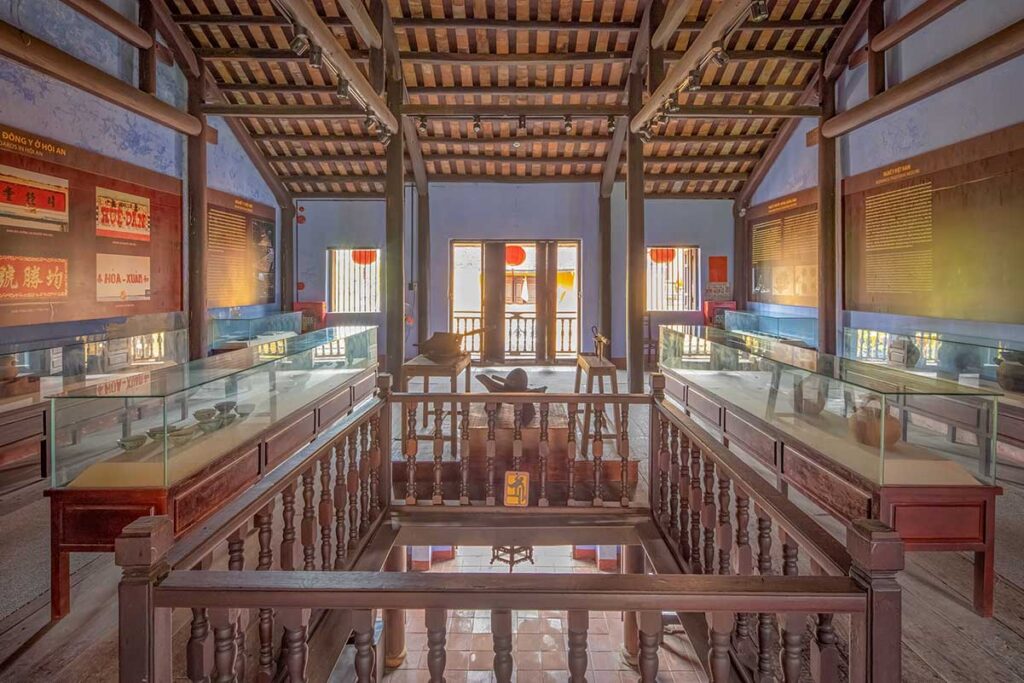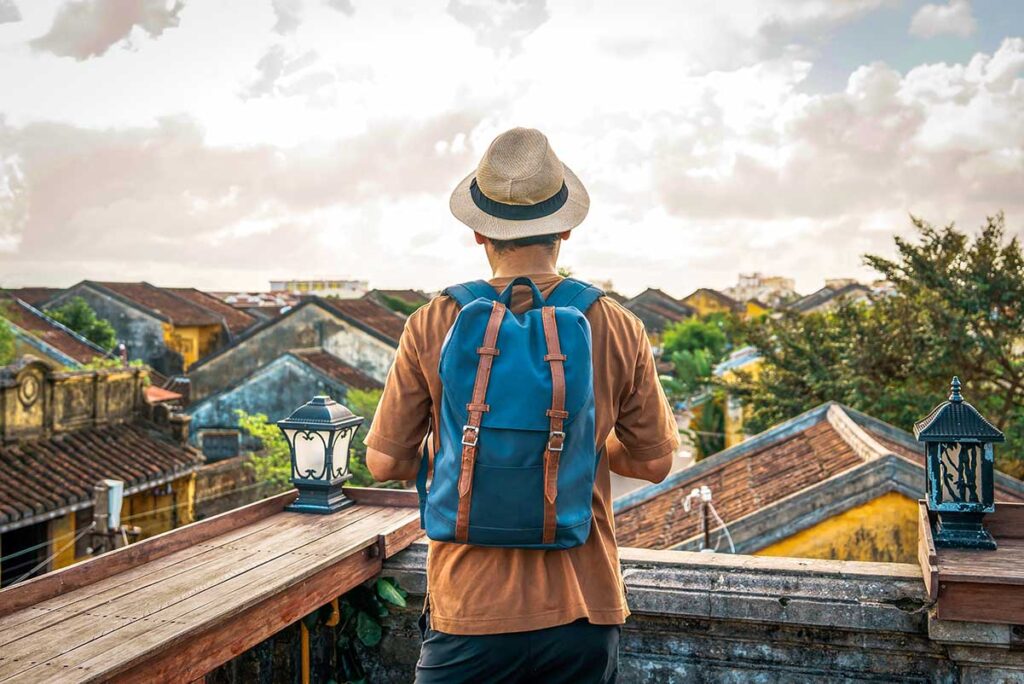What is the Museum of Traditional Medicine?
The Museum of Traditional Medicine opened in 2019 and is located at 46 Nguyen Thai Hoc Street, right in the heart of Hoi An Ancient Town. It’s set inside a restored traditional wooden house and focuses on the history and practice of Vietnamese and Chinese medicine—known locally as Thuoc Nam (southern medicine) and Thuoc Bac (northern medicine).

Inside, you’ll find a small but detailed collection of herbal tools, antique cabinets, and medical documents that reflect Hoi An’s heritage as a regional healing center. Visiting the museum requires using one of your five entries included with the Hoi An Ancient Town ticket.
Tip: Also visiting Ho Chi Minh City?
If you’re interested in traditional medicine and also plan to visit Ho Chi Minh City, consider checking out the FITO Museum (Museum of Traditional Vietnamese Medicine). It’s larger, more immersive, and often rated as one of the best museums in the city, offering a deeper dive into Vietnam’s herbal healing traditions.
Historical background
During the 16th and 17th centuries, Hoi An—then known as Faifo—was not only a thriving trading port but also a hub for traditional medicine. Its strategic location and multicultural population attracted skilled healers from both Vietnam and China, leading to the rise of many herbal pharmacies and consulting rooms along the main streets.
Two systems of healing developed side by side: Thuoc Bac (Chinese medicine) and Thuoc Nam (Vietnamese medicine). While Chinese medicine used imported herbs and diagnostic techniques like pulse reading, Vietnamese medicine focused more on locally grown plants and folk remedies. Together, they shaped the region’s medical practices for centuries.
One of the most important figures in Vietnamese herbal medicine is Tue Tinh (1330–1400), a monk and physician who dedicated his life to studying medicinal plants and writing about traditional cures. He is considered the father of Vietnamese medicine, and his teachings continue to influence how herbal medicine is practiced today. In Hoi An, his legacy lives on—not only through this museum but also in local street names and healing traditions.
Museum layout & Highlights
The Museum of Traditional Medicine is spread across two floors of a restored merchant house, offering a mix of recreated scenes and informative displays. While compact, the layout gives you a feel for how medicine was practiced in Hoi An centuries ago.
Ground floor
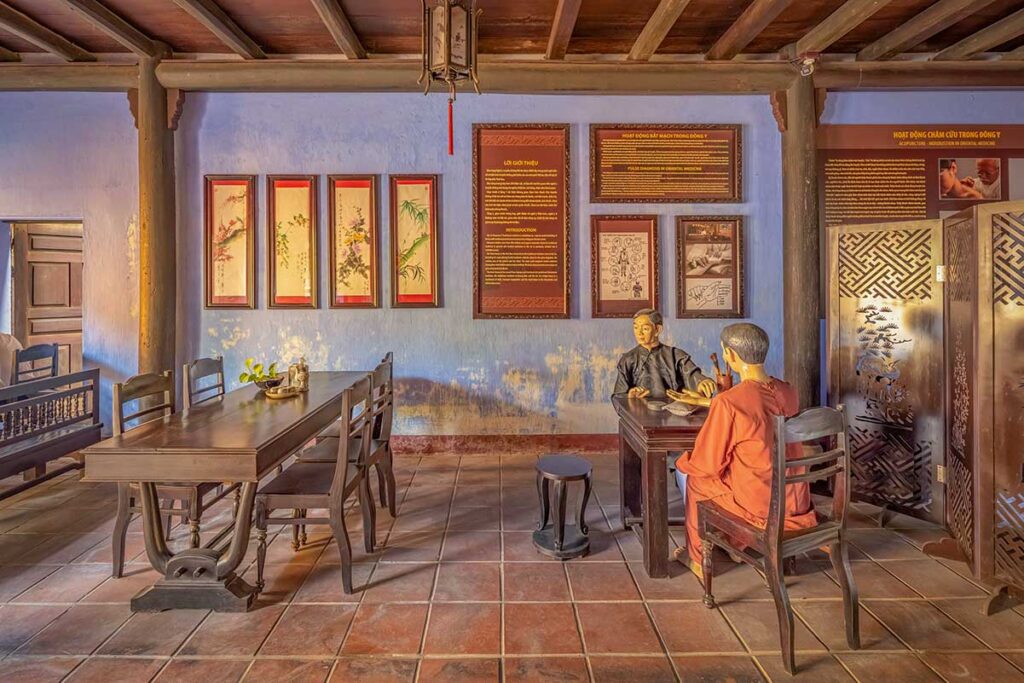
The ground floor is set up like a traditional Chinese medicine shop. You’ll see large wooden medicine cabinets, each filled with dozens of drawers once used to store different herbs and ingredients—some displays mention up to 108 varieties. There’s also a diagnosis table, a waiting bench, and herbal tools that recreate the atmosphere of an old-style clinic.
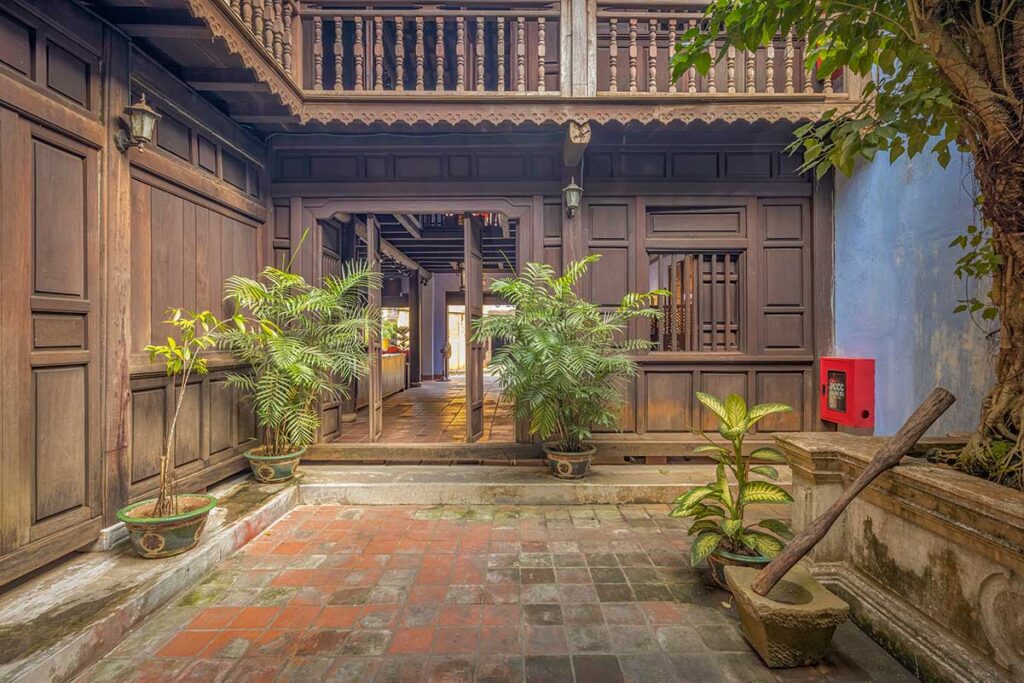
Around the small courtyard, trays display dried herbs and seeds, showing how ingredients were processed using sunlight. Nearby, you’ll find labeled samples of medical plants commonly used in both Chinese and Vietnamese remedies.
Second floor
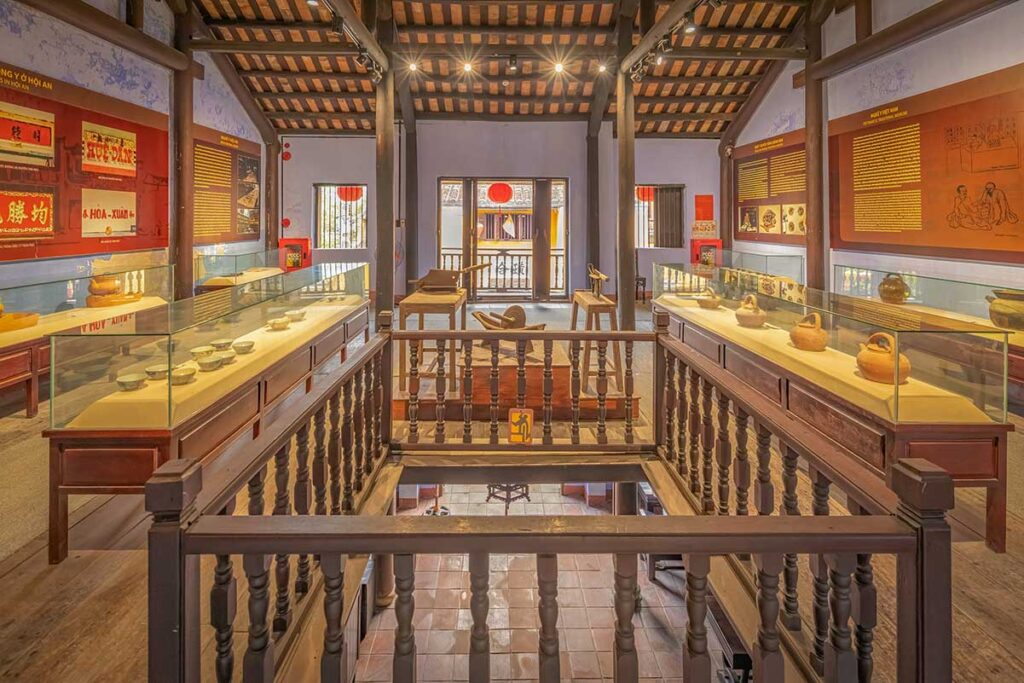
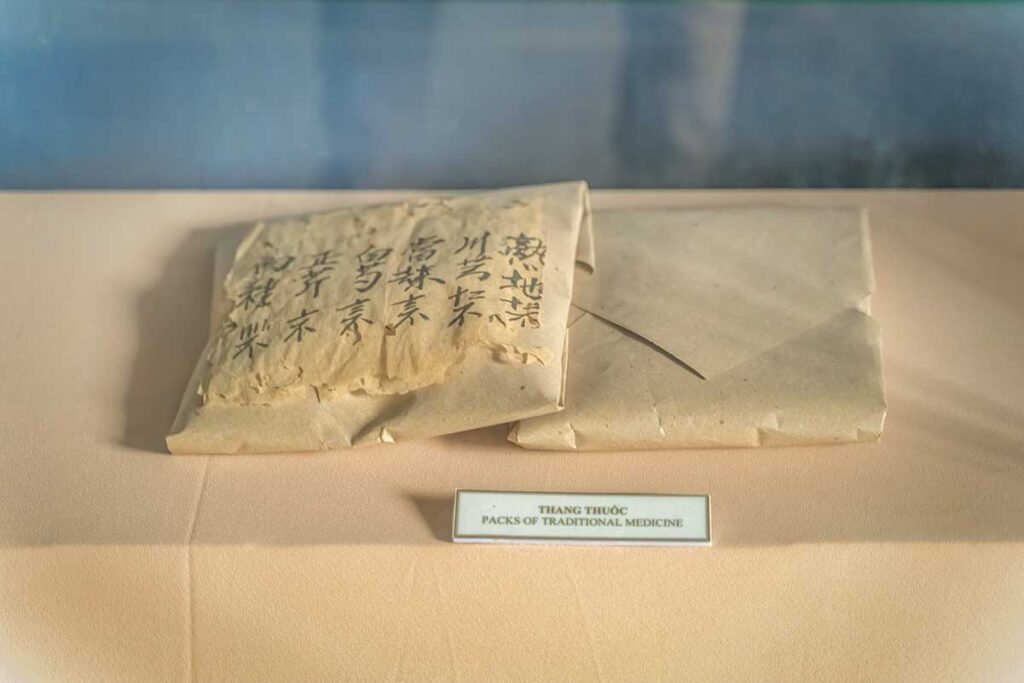
Upstairs, the focus shifts to Vietnamese traditional medicine (Thuoc Nam). This floor features information panels, historical photos, and old books that explain how Vietnamese healers relied more on locally grown plants and folk knowledge.
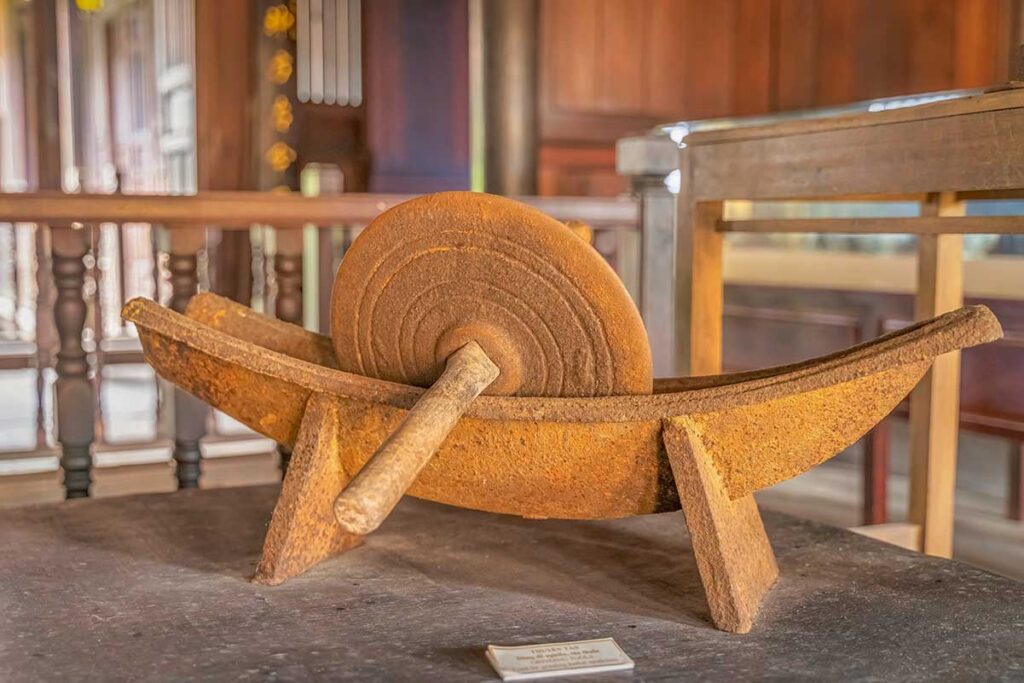

There’s also a section honoring Tue Tinh, the 14th-century monk-physician considered the founder of Vietnamese herbal medicine. His work in promoting homegrown remedies and documenting over 500 medicinal plants laid the foundation for much of what’s on display here.
Architectural features
Like many other museums in Hoi An, the building itself is part of the experience. The Museum of Traditional Medicine is housed in a traditional wooden merchant home, typical of the town’s architecture during its trading peak.
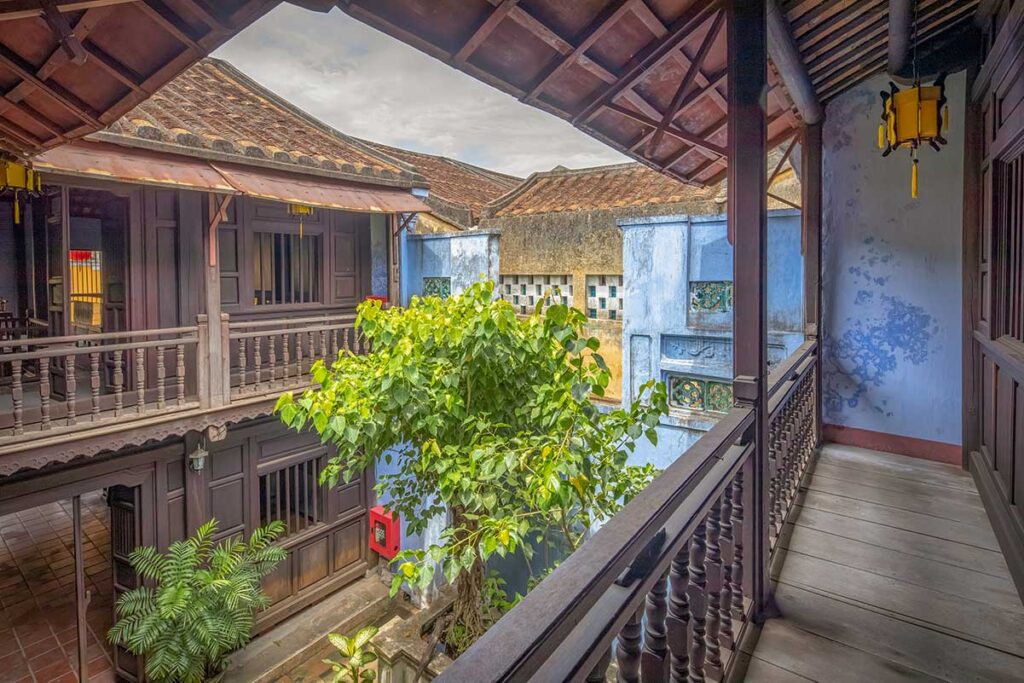

Inside, you’ll find a central courtyard, tiled floors, and exposed wooden beams, all preserved to maintain the house’s original character. The rooms are narrow but well laid out, with natural light filtering in from open spaces. It’s a quiet, atmospheric setting that adds to the museum’s charm.
Note that the stairs to the second floor are quite steep, so be cautious when going up or down. If mobility is an issue, most of the key displays on the ground floor can still be enjoyed without needing to climb.
Visiting information
Location
The Museum of Traditional Medicine is located at 46 Nguyen Thai Hoc Street, right in the heart of Hoi An Ancient Town. It’s surrounded by other historic sites and easy to combine with nearby attractions like the Museum of Trade Ceramics or the Cantonese Assembly Hall.
Getting there
If you’re staying in or near the Ancient Town, it’s easiest to walk. From areas further out, you can take a taxi or bicycle to the edge of the Old Town and then walk in. Note that cars and motorbikes are restricted in the pedestrian zone during most of the day.
Opening hours
The museum is open daily from 7:00 AM to 9:00 PM, but it’s closed on the 20th of each month for maintenance.
Entry fee
Admission is included in the Hoi An Ancient Town ticket (120,000 VND), which gives you access to five sights of your choice. So visiting this museum will use up one of your entries.
Facilities
There are restrooms available on the ground floor. Food and drink are not permitted inside, and there are steep stairs to the second floor—worth keeping in mind for anyone with mobility issues.
Is it worth visiting?
The Museum of Traditional Medicine is a niche attraction, best suited for those interested in herbal medicine, cultural history, or traditional architecture. The collection is small but thoughtfully presented, and the recreated pharmacy setup offers a glimpse into a lesser-known side of Hoi An’s past.
It’s probably not a must-see for everyone, especially if you’re more drawn to the town’s temples, assembly halls, or larger museums. But if you have an extra slot on your Ancient Town ticket, or simply want a quieter, more unique stop, this museum offers something a little different—without the crowds.
Other ticketed museums to compare
If you’re deciding how to use your five Ancient Town ticket entries, it helps to compare the Museum of Traditional Medicine with other museums included in the system. Each focuses on a different aspect of Hoi An’s history and culture:
- Museum of Sa Huynh Culture
Focuses on the early settlers of the region, with burial jars and artifacts dating back over 2,000 years. Best for those interested in archaeology and ancient history. - Museum of Trade Ceramics
Housed in a traditional merchant home, this museum tells the story of Hoi An’s role in international trade between the 9th and 19th centuries, especially in ceramics. A good mix of artifacts and architecture. - Hoi An Folk Culture Museum
The largest museum in town, covering daily life, traditional crafts, and festivals. Offers more interactive exhibits and a broader cultural perspective. - Hoi An Museum of History and Culture
General overview of the town’s development from ancient times through the colonial period. Less visually engaging than others but offers context if you’re interested in Hoi An’s full timeline.
Each museum has its own focus, so the best one for you depends on whether you’re more interested in ancient civilizations, trade, folk life, or medicine.
